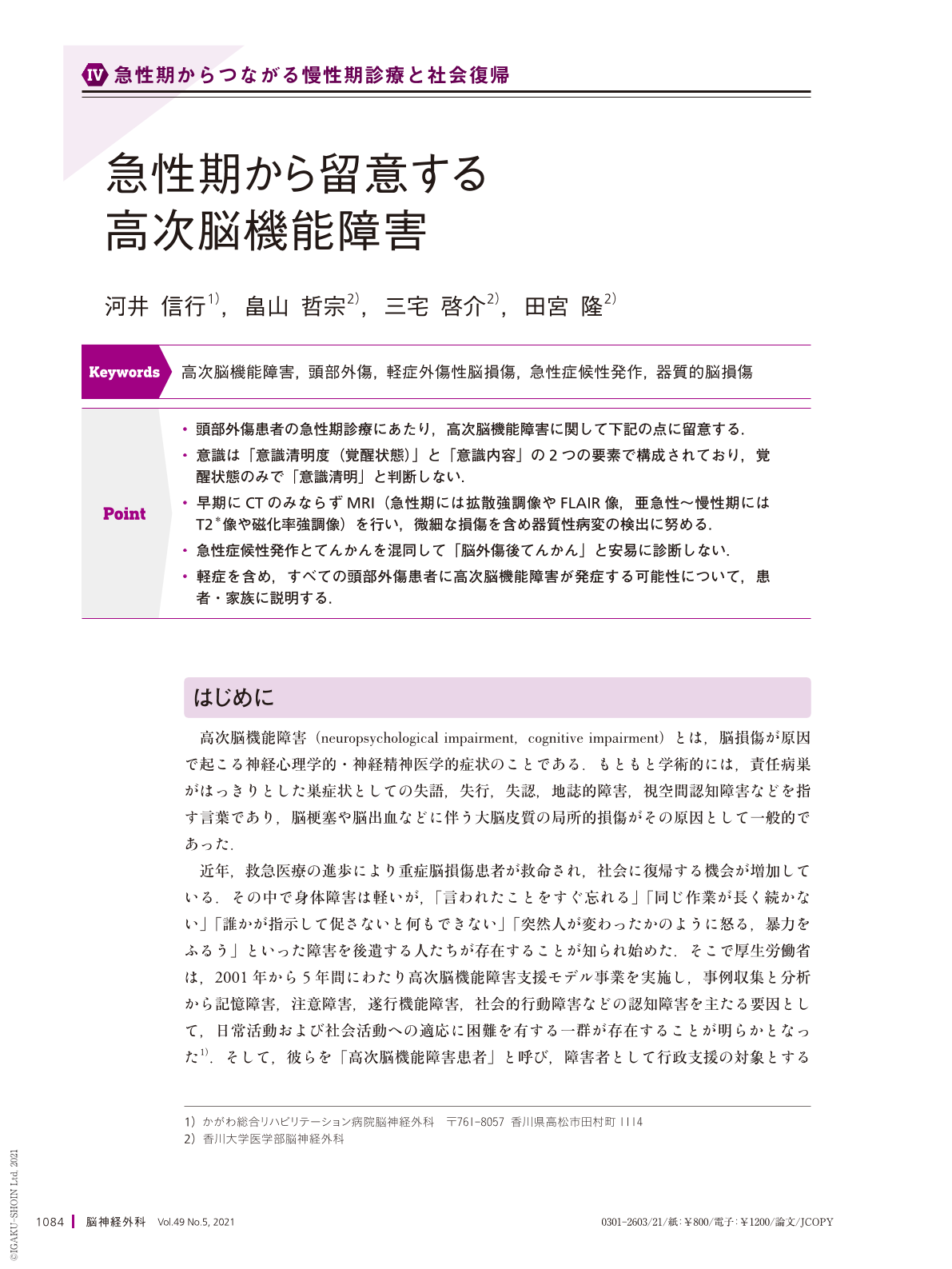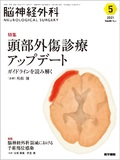Japanese
English
- 有料閲覧
- Abstract 文献概要
- 1ページ目 Look Inside
- 参考文献 Reference
Point
・頭部外傷患者の急性期診療にあたり,高次脳機能障害に関して下記の点に留意する.
・意識は「意識清明度(覚醒状態)」と「意識内容」の2つの要素で構成されており,覚醒状態のみで「意識清明」と判断しない.
・早期にCTのみならずMRI(急性期には拡散強調像やFLAIR像,亜急性〜慢性期にはT2*像や磁化率強調像)を行い,微細な損傷を含め器質性病変の検出に努める.
・急性症候性発作とてんかんを混同して「脳外傷後てんかん」と安易に診断しない.
・軽症を含め,すべての頭部外傷患者に高次脳機能障害が発症する可能性について,患者・家族に説明する.
Neuropsychological impairment after traumatic brain injury(TBI)is occasionally difficult to diagnose and called “invisible or hidden impairment,” especially when physical impairment is mild. Patients and their family do not recognize the impairment during hospitalization and even after discharge. However, they manifest many problems when they return to real life and society. Here, we have presented the characteristics and tips to diagnose neuropsychological impairment after TBI that are important for clinical neurosurgeons working at acute care hospitals. They are as follows: 1)In the emergency room, accurate evaluation of the consciousness state is the first step. 2)In the acute phase after TBI, do not mix up acute symptomatic seizure and post-traumatic epilepsy. 3)Soon after stabilization of the general condition, detailed radiological examinations should be performed to detect organic brain damages with MRI including DWI, FLAIR, T2*, and SWI. 4)At discharge, it is necessary to provide information about neuropsychological impairment to the patients and their family members. Neurosurgeons should diagnose and treat the patients with accurate understanding of neuropsychological impairment in the acute management of TBI.

Copyright © 2021, Igaku-Shoin Ltd. All rights reserved.


